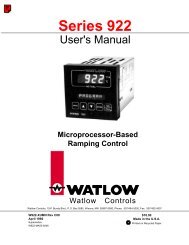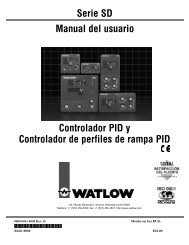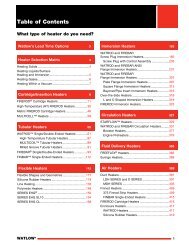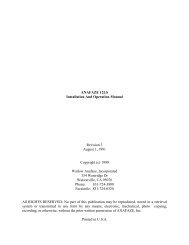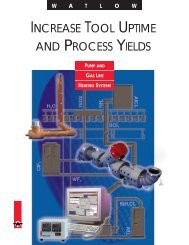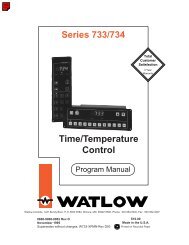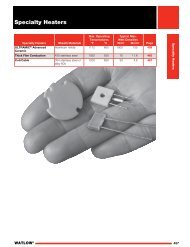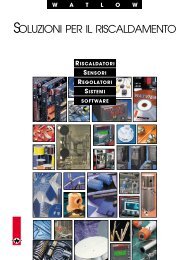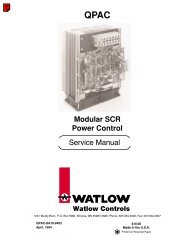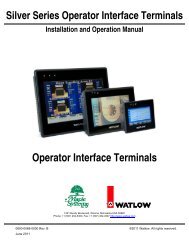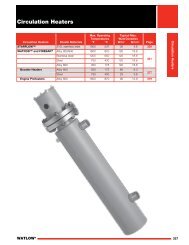pid practical guide.pdf - Watlow
pid practical guide.pdf - Watlow
pid practical guide.pdf - Watlow
You also want an ePaper? Increase the reach of your titles
YUMPU automatically turns print PDFs into web optimized ePapers that Google loves.
3 Check to see that the output is stable (look at output % notPV)4 If output is stable with less than a 2% delta change5 Set I to 50% of current setting6 Check to see that the output is stable (look at output % notPV)7 If output is stable go to step 58 When output is NOT stable with a greater than a 2% deltachange9 Increase I by 50% of current setting10 If output is still not stable increase I by 50% of currentsetting until stable11 When output is stable leave Control Mode in Auto and tune theD Mode3.3.3 Manual Tune - Proportional, Integral and DerivativeThree-mode, Proportional, Integral, and Derivative control is used primarily whenovershoot of the process variable cannot be tolerated. Proportional and Integral must betuned before attempting to tune the Derivative mode.To determine the Derivative coefficient simply divide the Integral coefficient by 6.3.4 Summary - Manual Mode TuningIn most processes, the tuning parameters acquired through following the above stepsshould not have to be changed or retuned. On the other hand, the user may want toconsider retuning if one or more of the changes identified below were to occur:• Large variance in operational Setpoint from the tuning Setpoint.• Process material loads have changed in size• Process load changes due to exothermic reactionThe Integral and Derivative values will usually remain the same. In the event that theIntegral value is changed the Derivative should also be changed as well.14



